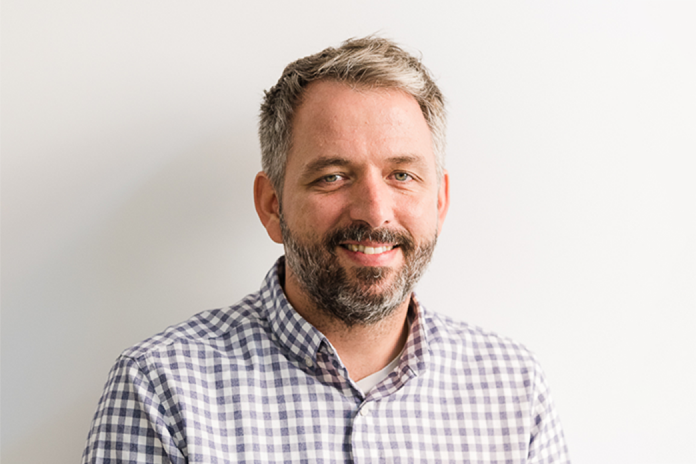Bdeo, which builds visual intelligence for motor and home insurance firms, is currently going through big changes as it looks to reinforce its identity. As part of this effort, the Spanish InsurTech recently underwent a rebranding.
Having been around for four years, the company felt the time was right to refresh its website design to be more structured and better highlight the capabilities of its product. Its visual intelligence is a robust and innovative technology stack and so its website needed to reflect this. The best way to outline the clarity and simplicity of the technology is by having a transparent and simple website that ensures visitors are not overwhelmed with information. At the heart of its redesign were the company’s three pillars – automation, innovation and trust. These three important aspects also shaped Bdeo’s new slogan “The power to change the insurance industry.â€
Bdeo CEO Julio PernÃa said, “Our new brand is going to be key to start positioning ourselves in new verticals as well as consolidating our position in the ones we already have. In the coming weeks we will be launching our own content strategy, which will be a fundamental pillar to drive our new branding and strengthen our mission: to change the insurance industry.â€
A new website and logo is not the only part of Bdeo’s next growth stage. Accompanying the rebrand, the InsurTech company released a brand new Property product, which is focused on identifying the cause of water damage within homes. This release marks the company’s first expansion into another vertical.
The AI-based solution combines deep learning and machine learning algorithms to help companies reduce the time between first notice of loss and the final repair or settlement. Through its autonomous damage capturing process, the insured provides near real-time pictures of the damage and important information, such as the number and types of rooms affected. With the data collected, the AI models provide recommendations on the best professional to visit and whether a claims expert is needed at the property.
Bdeo’s decision to enter the property insurance market was based on numerous factors but there were three key reasons. The first was to solve pain points. PernÃa said, “We identified a key pain in the companies and that is that their claims management processes are quite complex, which results in long resolution times and in many different intervening parties. Without the technological tools to optimise these processes, this translates into a significant cost of resources for insurers.â€
The second deciding factor was down to its visual intelligence and how fundamental the technology is being used to automate processes in a range of sectors. There was a big opportunity to help companies in the space adopt these types of solutions. Finally, PernÃa stated that half of the damage caused in homes is from water. Despite the frequency of incidents, it is one of the longest claims to resolve, with an average handling time of over 29 days. Lengthy claims cycles like this often cause major dissatisfaction from the insured. “It is precisely here where Artificial Intelligence comes into play, being able to establish patterns that allow the causes of these damages to be identified, speeding up the work of the agents.â€
While there was a clear gap in the market, it was not a simple decision to make. While there are some similarities between home and auto insurance claims, they are not the same and home claims are must tricker, PernÃa stated. The complexity within home insurance claims comes from the fact there are so many professionals involved with repairs. When a car is damaged, it simply goes to a garage and all the work is completed there. However, fixing damage in a home might require a plumber, painter, bricklayer, electrician and more. Additionally, people are more heavily impacted by damage in their homes and, depending on the severity, it can be tough for them to adapt their lifestyles during repairs.
PernÃa added, “However, there are similarities in terms of the pain that insurance companies need to solve. And it is none other than digitising and automating processes that involve trust between insured and insurer, optimising tasks and reducing operating costs, all while also seeking to improve customer satisfaction.†Thanks to these similarities, the visual intelligence technology can support both home and auto claims, and can be adapted to support the specific needs of each vertical.
As more people move online, people are becoming more accustomed to streamlined and quick services. “In recent years, we customers have become accustomed to having our problems or queries resolved almost immediately. And this is something we also want to apply to claims management. Policyholders want their problems to be answered in real time, they don’t want to make an appointment with a professional to check the damage to their home a week later, with the dissatisfaction that this can cause. They also want more autonomous processes that allow them to gain agility and have a solution more quickly.†The pandemic has only accelerated this shift and people are becoming more reliant on digital service. It is not just consumers that have needed the technology. The pandemic meant many insurance firms were incapable of sending people to assess damage of properties, making the Bdeo platform even more appealing.
This move into the property space is already looking like a positive move. The product is already being tested by insurance companies and they are seeing how the technology can automate their processes to make them more efficient, PernÃa said.
Growth is very much the focus for Bdeo at the moment. In addition to the launch of a new product and its rebrand, the company recently signed a deal with GT Motive, an automotive repair data specialist. This agreement is aimed at improving its platform to accelerate damage analysis and cost estimation to simplify decision making for insurers.
Bdeo, which was recently named in this year’s InsurTech100, also closed a €5m funding round in late 2020 from BlackFin Capital Partners, K Fund and Big Sur Ventures. The capital injection will help the company to pursue its growth throughout the coming years.
Copyright © 2021 FinTech Global











